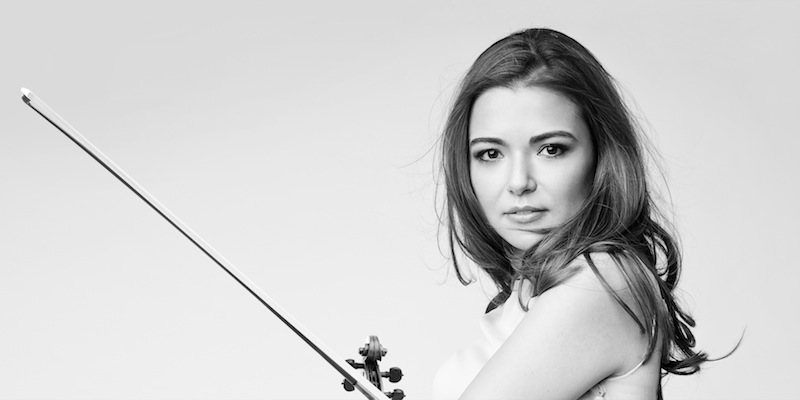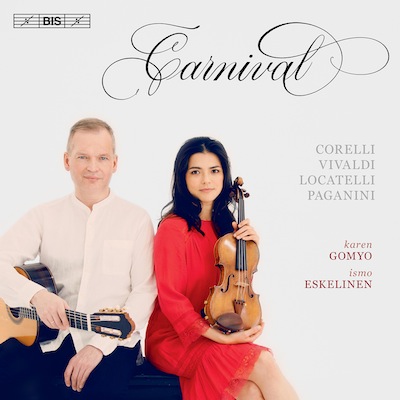
Month: January 2020
Q & A with Karen Gomyo

Karen Gomyo was born in Tokyo, but grew up in Montréal. That is, up to the point when, at age 10, she moved to New York City, in order to study at the Juilliard School, at the invitation of Dorothy DeLay. Miss DeLay taught, among many others, my friends Arturo Delmoni and David Kim. Indeed, it’s the rare household-name violinist of the last 50 years whom Miss DeLay did not teach.
Miss Gomyo continued her studies at the Indiana University Jacobs School of Music (yay!) and the New England Conservatory. Apart from Miss DeLay, her teachers included Mauricio Fuks, Donald Weilerstein, and cellist Heinrich Schiff.
In addition to the standard concert repertoire, Miss Gomyo has a great affinity for the music of Astor Piazzolla, and has performed with the late Piazzolla’s former colleagues Pablo Ziegler (whose solo recording on the Steinway & Sons label can be heard here), Hector del Curto (bandoneon), Claudio Ragazzi (electric guitar), and Pedro Giraudo (double bass).
Miss Gomyo has followed up her recording of the Bo Linde violin concerto with an SACD of music for the wonderful combination of violin and classical guitar, which I reviewed last post. Questions and answers after the jump. Continue Reading →
Karen Gomyo and Ismo Eskelinen: Carnival (music for violin and guitar) (SACD)

Karen Gomyo and Ismo Eskelinen: Carnival
Music for violin and guitar of Corelli, Vivaldi, Locatelli, and Paganini.
SACD (BIS 1998) and MP3 downloads available from Amazon
Hi-Res downloads (24-bit/96kHz stereo AIFF, ALAC, FLAC, and WAV) available from e-classical and HDTracks
Streaming available from Tidal (and others)
Release date: November 1, 2019
Recorded September 2015 at Troy Savings Bank Music Hall, New York. Producer and recording engineer: Hans Kipfer (Take5 Music Production). Violin by Antonio Stradivari, the ‘Aurora’ (1703); bow by François Tourte (c. 1810); Guitar by Gabriele Lodi (2011). Total time 67 min. 30 sec.
It used to be that only hard-core violin nerds were aware that legendary violinist Niccolò Paganini (1782-1840) played the classical guitar, or that he also composed a substantial body of works for that instrument. Superb recordings such as this one can only increase recognition of that intriguing fact.
This recording places works by Paganini (and a selection of his “Carnival of Venice” variations, with the addition of a new variation by Miss Gomyo) in the context of earlier works by Paganini’s violinist/composer predecessors Corelli, Vivaldi, and Locatelli, who were born in 1653, 1678, and 1695, respectively.
For the earlier Baroque sonatas, the guitarist on this recording, Ismo Eskelinen, created guitar parts from the original basso-continuo parts. But even in the Baroque era, the guitar’s predecessor the lute was a continuo instrument as well as a solo instrument (and also the instrument in the duo genre known as the “lute song”).
For those of us who remember the dawn of the CD medium (I was the founding classical-music columnist of Digital Audio magazine, which was later rebranded as CD Review), mention of the recording venue for this recording should bring a flood of warm memories. The venue for this project was Troy, New York’s Troy Savings Bank Music Hall, which was for many years where Dorian Recordings did most of their work. More information, and sound bytes, after the jump. Continue Reading →
Jakub Józef Orliński: “Vedro con mio diletto” from Il Giustino (Antonio Vivaldi)
There are times when I think that a music-business story is “too good to fact-check,” and this is one of them. Young counter-tenor Jakub Józef Orliński agreed to substitute for an ensemble that could not appear for what Orliński believed would be the radio-only live broadcast of an outdoor afternoon concert in the south of France. The New Yorker picks up the story (after mentioning that Orliński was, on the day of the concert, nursing a mild hangover):
Orliński put on baggy shorts and beat-up sneakers, and rolled up the sleeves of a crumpled tattersall shirt: this was radio, after all, and it was ninety degrees outside. Only when he and his pianist, Alphonse Cémin, who was in shorts and flip-flops, arrived at the recording venue—a courtyard with a small audience—did they learn that the performance was also to be streamed on Facebook Live. It was too late for Orliński to change clothes, and so he sang just as he was—unshaved, and dressed as if ready for a day of sleeping it off under the Provençal plane trees.
This is obviously a superb job of singing; the YouTube view count of 4.7 million views is something I find very heartening. That’s in part because counter-tenors are in a way like harpsichords. In both cases, at times there seems to be a parity between the numbers of people who can enjoy the sound, and those who feel compelled to flee from it. And in that regard, I would have preferred a Baroque continuo rather than a Steinway grand (Vivaldi’s opera dates from 1724), but the piano accompaniment is very sensitive. And one must keep in mind that Orliński was substituting on less than 24 hours’ notice. (I do crack up every time I see the “page turner” reach up and touch the iPad.) Also, for an outdoor concert, what a lovely recording job! More, after the jump.
Continue Reading →


